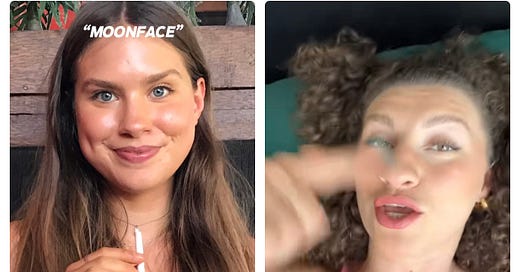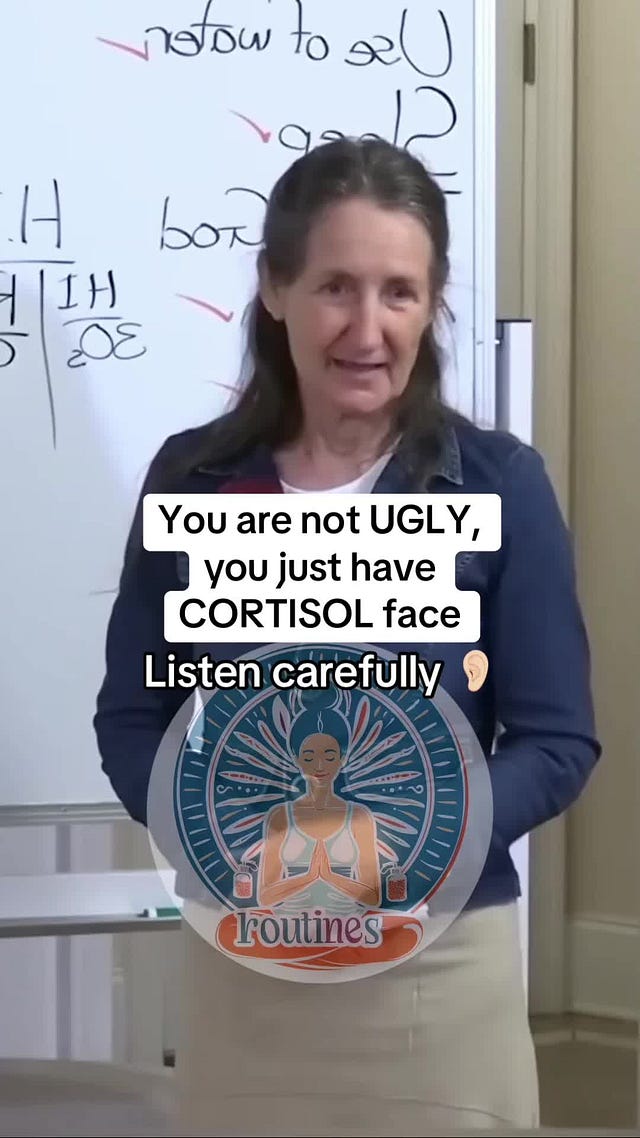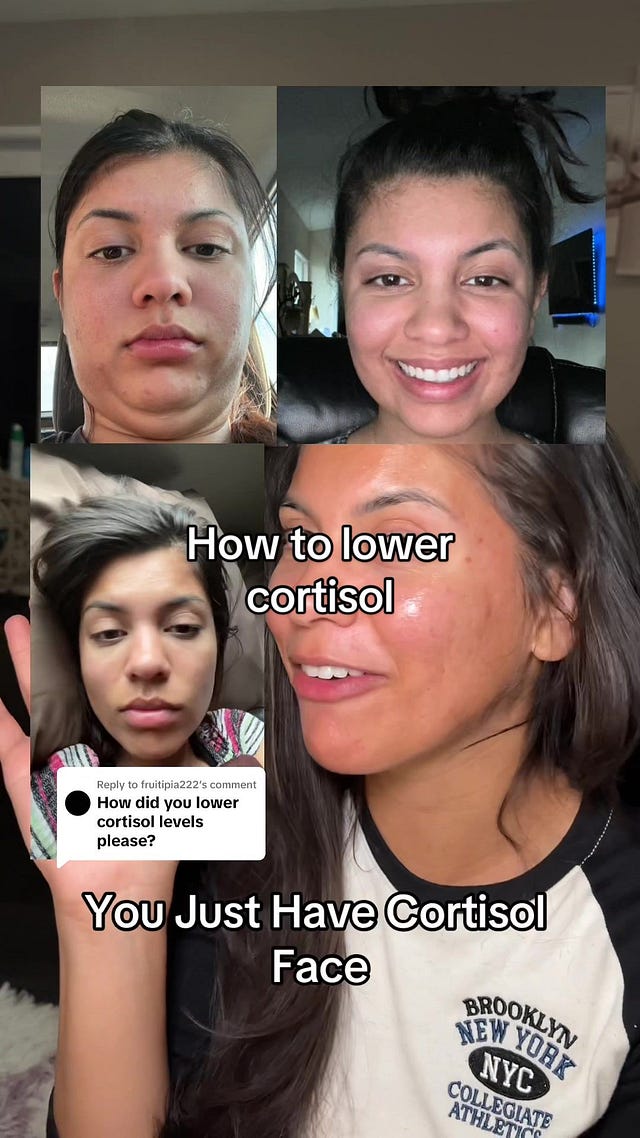TikTok Translator: Moon Face, Cortisol Face and Runner’s Face - TikTok Has An Obsession With Our Faces
Do we really need to be any more obsessed with our faces?
Welcome to my new series TikTok Translator. TikTok is awash with beauty trends, but what do they all mean and should we be taking any notice? As a self assigned TikTok Translator, I’ll be doing the hard work to let you know which ones are worth the hype and which ones you can skip.
Is there something genuinely wrong with the way our faces look, or is it just TikTok? TikTok has an obsession with facial appearance, it’s speciality taking what seems like a normal facial feature and somehow creating a craze around it - almost always one we should be worried about.
One evening, as I’m scrolling through TikTok, it doesn’t take even five minutes before I start feeling self-conscious about whether I have Cortisol Face or perhaps Runner’s Face. One thing is certain: I’m obsessing over how my face looks, and maybe, in some ways, this is TikTok’s role.
TikTok sets stringent beauty standards. There’s a very particular way your face should look, and any deviation sets off alarms. The hashtag #cortisolface has amassed over 2.5 million views, while #moonface has over 93.9 million views, and content on #runnerface has more than doubled in the last month. On TikTok, the panic is palpable, and creators are producing more content, feeding a growing hunger to “fix” our faces. This content ranges from how to identify the signs to solutions for these so-called issues. However, 95% of this content isn’t from professionals, but from your average TikTok creators.
So what exactly are cortisol face, moon face, and runner’s face?
Cortisol Face: Refers to facial changes from elevated cortisol levels, a stress hormone, leading to fluid retention and a rounder, puffier appearance.
Moon Face: A symptom of Cushing’s syndrome, caused by excess cortisol, resulting in a round, full face due to fat deposits.
Runner’s Face: Describes a gaunt or prematurely aged look supposedly from facial fat loss due to long-distance running. Currently, there is no scientific evidence to support Runner’s Face.
 Tiktok failed to load.
Tiktok failed to load.Enable 3rd party cookies or use another browser
It’s not my aim to discredit cortisol face and moon face; they are very real. The effects of cortisol on our bodies are significant and well-documented (Jessica Defino has written a great article on the effects of cortisol on the body, defo worth checking out). “There are a few diseases or syndromes where you can have high cortisol. The one that most people have heard of is Cushing’s [syndrome], when your body is inappropriately making cortisol, which is a stress hormone,” explains Dr. Amanda Kahn, a New York City-based primary care physician and longevity expert (she told WWD). “You’re retaining fluid, and you can also get puffy. You can also have fat deposits in places that we don’t typically expect.”
However, there’s something insidious about the way this conversation is playing out on TikTok. Rather than focusing on the health implications, it’s more concerned with the superficial aesthetic implications. Would TikTok be concerned about Moon face” if it manifested differently? Before and after “Cortisol Face” transformation videos resemble weight loss narratives, with "before" clips showing rounder faces and "after" clips highlighting slimmer, more defined features.
Is it purely coincidental that the rise of cortisol face coincides with the comeback of the 90s ultra-slim frame? The body positivity movement truly feels dead.
As I examine my face, I can't get cortisol face out of my head. I display many of the symptoms: round, puffy, and super blemish-prone. I become particularly concerned with diagnosing my face—it has to be something, right? Surely, it can’t just be how my face is.
This is the issue with TikTok: there are no clear definitions, making diagnosis blurry. Ultimately, it could very well be just your face, or there could be underlying health issues. Consequently, millions of people jump on the bandwagon to rectify a maybe problem - it’s so easy do so.
Like many TikTok viewers, I aspire to change, in that moment, to “fix” my face. Searches such as “how to reduce cortisol in my body,” “what supplements can I take to reduce cortisol,” and “what can I do to fix moon face” are noted by Google as breakout searches. The solution offered are often product-focused. Skincare, whether it be a serum or a tool, cannot reduce cortisol levels in the body. Maybe this is where my psychology degree comes in handy, but stress management involves more than just a serum.
Nevertheless, this did not stop me from trying everything: lymphatic drainage massages, moon juice mocktails, and supplements. Everything seemed to work to some extent, but it could also be a placebo effect. I assume that if you only treat the symptoms, the issue will eventually return. Honestly, waking up half an hour earlier to do a facial massage was not it.
I’m on the fence. Yes, “Moon face”, “Cortisol face”, and even runner’s face are real (according people’s experiences), but the hype feels misaligned. It’s a great starting point for conversations about stress and health, but the depiction on TikTok isn’t about radical access to information; it’s about adhering to an aesthetic code. Plus isn’t it just more stress?







I find that the TikTok phenomenon of labelling pretty much anything that exists (clean girl, dark feminine, cortisol face, everything is an era etc) places an urgency on that trend.
It’s that age old thing of if you name something you give it power. It makes it legitimate/established so people panic and think something’s wrong.
Interesting to see. Also, pls keep doing this TikTok translator series! LOVE LOVE LOVE
TikTok translator 🙌🏼🙌🏼🙌🏼